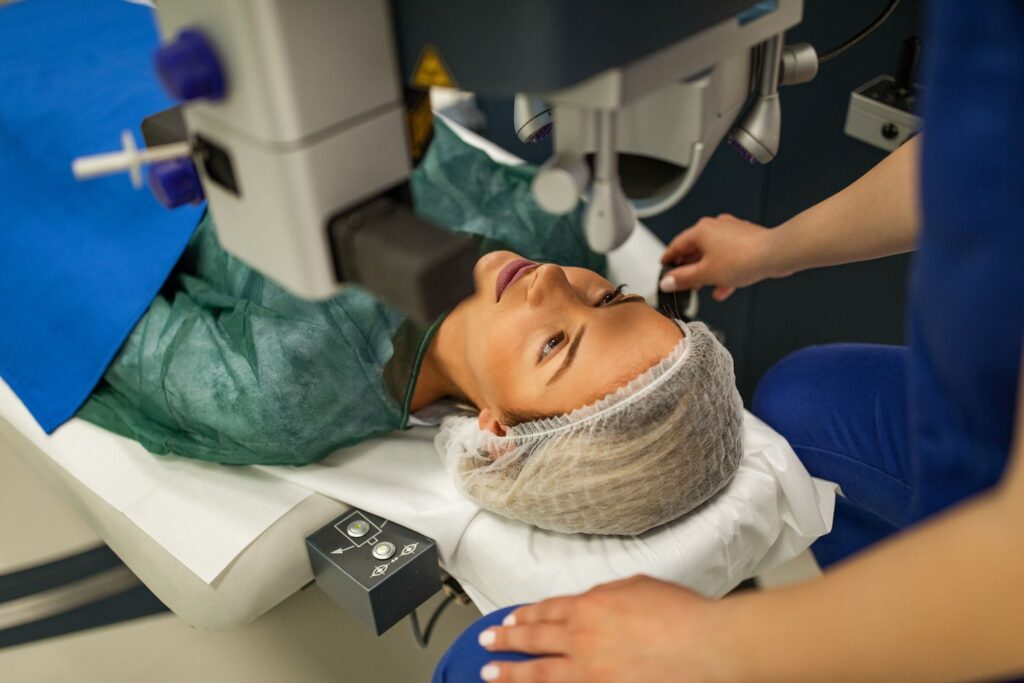Introduction: Clearing Up the Confusion
Hearing you have cataracts can stir up all sorts of emotions—relief that there’s a reason for your cloudy vision, but also anxiety about what comes next. And unfortunately, there’s no shortage of myths floating around about cataract removal and recovery.
Let’s gently clear the air.
This article is here to walk you through what’s true, what’s totally wrong, and what you can really expect after cataract surgery. Whether you’re preparing for your own procedure or helping a loved one through it, understanding the facts makes everything feel a little less scary—and a lot more hopeful.
Myth #1: “Cataract surgery is painful and takes hours.”
Totally Wrong.
The truth is, modern cataract surgery is one of the quickest and most comfortable procedures available. It usually takes about 15 to 30 minutes, and many patients say they felt no pain at all, just a little pressure or light during the process. Local anesthesia (eye drops or a small injection) is used to keep things comfortable. There are no stitches, no hospital stay, and no general anesthesia needed in most cases.
Week 1: The First Few Days After Surgery
So what happens after you leave the clinic?
You might notice:
- Mild itching
- Blurry or hazy vision
- Light sensitivity
- A scratchy feeling (like something’s in your eye)
All of this is normal. Your eye has just gone through a delicate procedure and needs time to rest.
Your job:
- Use the prescribed eye drops—they help prevent infection and reduce swelling
- Don’t rub your eye, no matter how tempting
- Rest your body and eyes as much as possible
- Go to your follow-up appointment, usually the next day
Myth #2: “You’ll be stuck in bed for weeks.”
Totally Wrong.
While rest is important, you don’t have to be confined to bed. In fact, gentle movement—like walking around the house—is encouraged. You’ll want to avoid anything strenuous, but most people are up and about the very next day.
See more: Discover Your Sleep Type: Personalized Solutions with a Sleep Test
Week 2: Adjusting to Clearer Vision
This is when things start to get exciting. Most patients notice improvement in vision within a few days, and by the second week, that improvement becomes clearer.
You may feel:
- Surprise at how bright and sharp colors are
- Joy at seeing fine details again—faces, books, nature
- Relief that daily tasks like reading or watching TV feel easier
It’s safe now to resume many light activities:
- Reading
- Walking
- Light chores
- Screen use (in moderation)
But remember: take breaks often and don’t overdo it.

Myth #3: “You can only have cataracts removed when they’re ‘ripe.’”
Outdated.
This idea came from older surgical methods. With today’s techniques, cataracts don’t need to reach a certain “stage” to be removed. If they’re interfering with your quality of life—blurring vision, causing glare, making it harder to read or drive—it’s usually time to talk about surgery.
Week 3: Gaining Confidence
By now, your vision is probably much sharper. Colors are vivid. You’re adjusting to light better. You may even be cleared to drive again—depending on your doctor’s advice.
Common milestones this week include:
- Returning to part-time work
- Going out for errands
- Resuming gentle social activities
Some patients still notice minor glare or halos at night—especially with bright lights—but these often fade over time.
Myth #4: “You’ll need glasses for the rest of your life.”
It depends—but not always true.
During cataract removal, the clouded lens is replaced with an artificial intraocular lens (IOL). There are several types, including monofocal, multifocal, and toric lenses. Many people can significantly reduce or even eliminate their need for glasses—especially for distance vision. That said, you may still want readers for up-close work.
Your eye doctor will help you choose the best lens for your lifestyle.
Week 4: Seeing the World Differently
You’re almost fully healed now.
Vision continues to stabilize, and you’ll likely go for a follow-up eye exam to check how your eye is doing—and whether you need glasses for any remaining adjustments.
Patients often say that life feels:
- Brighter
- Sharper
- More enjoyable
It’s not just about vision—it’s about freedom, independence, and confidence.
Myth #5: “Both eyes are treated at once.”
Not usually.
In most cases, cataract surgery is done on one eye at a time—often a few weeks apart. This allows one eye to heal fully before the second is treated, reducing risks and helping your brain adjust to the changes in vision.
FAQs
“Can I rub my eyes?”
No, please don’t. Even if it feels itchy, rubbing your eye can interfere with healing. Use your prescribed drops and ask your doctor if the discomfort continues.
“Will my vision keep improving?”
Yes. Vision typically continues to sharpen for several weeks as your eye adjusts. Don’t be discouraged if it’s not perfect immediately.
“What if one eye feels different than the other?”
That’s common—especially if one eye had surgery first. Your eyes may adjust at different speeds, but it usually balances out once both are healed.
Conclusion: Don’t Let Myths Hold You Back
Cataract removal isn’t something to fear. It’s a safe, well-practiced procedure that has changed millions of lives for the better. And while there’s a lot of misinformation out there, knowing the truth can help you make a more confident, calm decision.
If you or someone you love is considering surgery, talk with your eye care team. Ask questions. Share your concerns. Then take a deep breath—you’re on the path to clearer days ahead.

